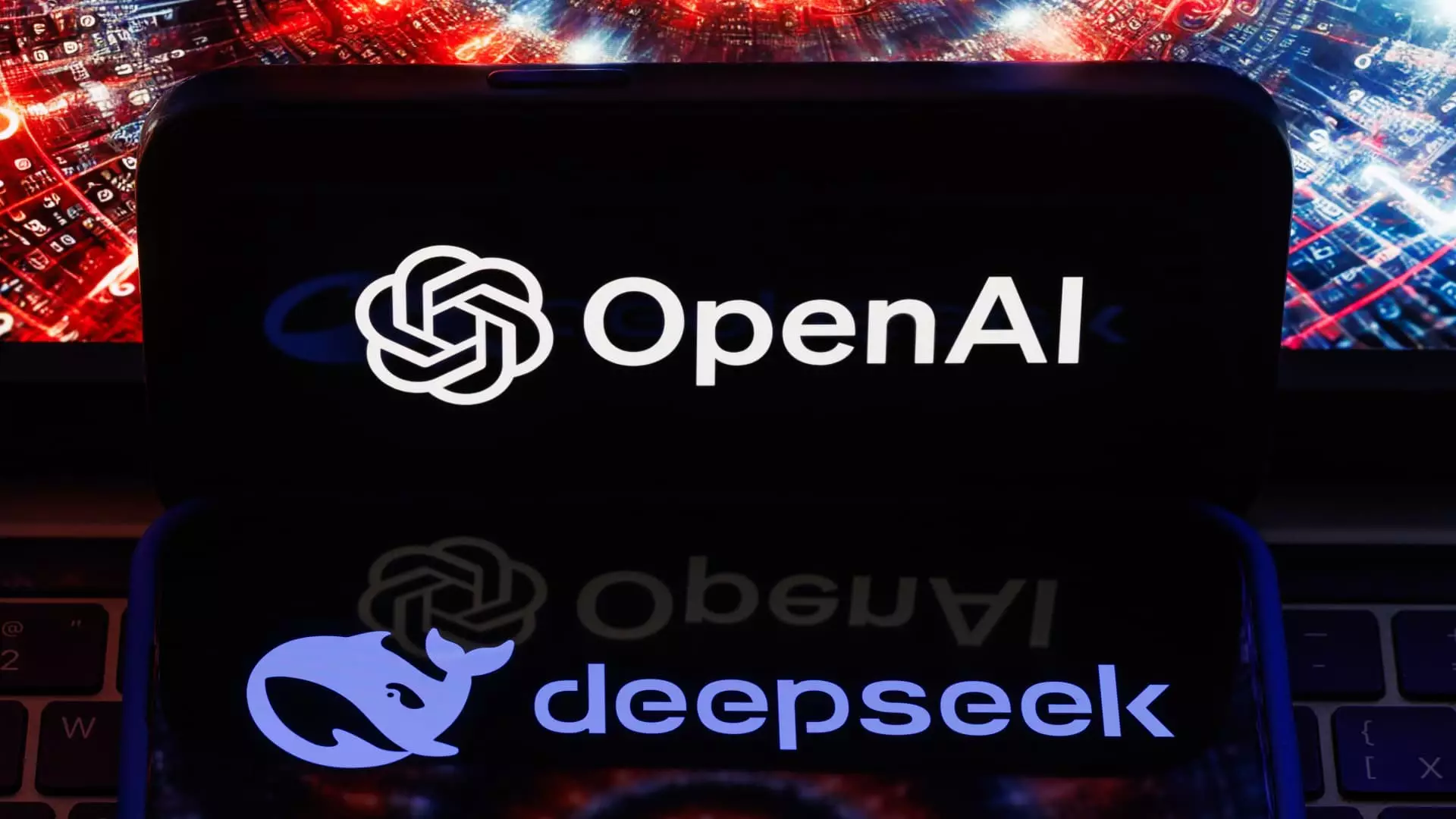The competitive landscape of artificial intelligence (AI) is undergoing profound transformations, particularly in light of recent developments from the Chinese AI research firm DeepSeek. Not surprisingly, these advances have ignited discussions among top executives and technology leaders regarding the implications of this shift in the global AI paradigm. As the United States and China jockey for supremacy in this pivotal technological domain, the emergence of DeepSeek is a crucial event that could redefine not only technological capabilities but also geopolitical relations.
DeepSeek’s announcement of its new AI model has sent ripples through the tech community, especially after revealing its development costs stayed under $6 million. In stark contrast, other major players in the AI space, such as OpenAI and Anthropic, invest vast sums—often reaching billions—into their technologies. This disparity raises questions about efficiency and prioritization in AI development. Chris Lehane, OpenAI’s chief global affairs officer, articulates the significance of this breakthrough, asserting that DeepSeek’s model illustrates a competitive landscape teetering on the edge of intense rivalry.
This is not just a matter of business competition but also a battle between differing ideologies: democratic versus authoritarian approaches to technology. The discourse around AI in China often highlights concerns over censorship, particularly regarding sensitive subjects such as the Tiananmen Square massacre. This dichotomy raises cautionary flags about the ethical implications of AI development guided by conflicting political ideologies.
Experts warn that the West’s complacency regarding China’s technological capabilities could prove dangerous. Abishur Prakash, a geopolitical strategist, asserts that the narrative of the U.S. being the preeminent technological leader is increasingly outdated. The gap between U.S. and Chinese AI capabilities has diminished significantly, suggesting that the West must recalibrate its understanding of China’s progress and its implications on global technology dynamics.
Despite the advancements heralded by DeepSeek, many U.S. tech leaders still maintain that the startup does not pose an imminent threat to their dominant market positions. While some view DeepSeek’s R1 model as a credible competitor to OpenAI’s o1, skepticism remains regarding the sustainability of this model without substantial backing from larger-scale systems.
Intriguingly, doubts loom about DeepSeek’s assertions—particularly regarding the real costs behind its development. Industry reports indicate that the startup’s historical hardware expenditure surpasses $500 million, contradicting their claims of low-cost production. This leads experts to speculate that the efficiency touted by DeepSeek might be built on methodologies like “distillation,” more reliant on higher-performance models, possibly those developed in the U.S. The implications of this would suggest that DeepSeek’s innovations, while externally impressive, may still rely heavily on foundational models created elsewhere.
Leaders like Victor Riparbelli and Meredith Whitaker argue that while DeepSeek’s techniques challenge traditional scaling paradigms in AI model development, they might not be sufficient to disrupt the established market dynamics dominated by larger players. The ongoing reliance on substantial model sizes remains a salient point, as market inertia continues to favor the traditional approach to AI model development.
As the U.S. and China continue their technological arms race in AI, the stakes have never been higher. The enhancements exhibited by DeepSeek reveal that the landscape is evolving, with new contenders emerging that challenge previous assumptions about the capabilities of Chinese technology. However, the extent to which these advancements can significantly disrupt existing market leadership remains in question.
Overall, while it would be imprudent to dismiss DeepSeek’s achievements, industry experts underscore the importance of reserve and caution in evaluating the implications. Progress in AI technology is more than just about individual models; it also encompasses larger themes of geopolitical relations, ethical concerns, and the very nature of innovation in a world that seems increasingly polarized. As deeper inspections of DeepSeek and other emerging players unfold, it is clear that the global AI race is only just beginning, and the outcomes remain uncertain.


Leave a Reply